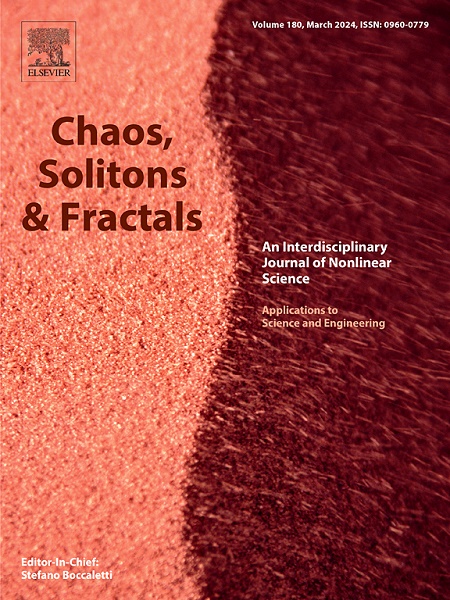On the Lie symmetry analysis of three-dimensional perturbed shear flows
IF 5.3
1区 数学
Q1 MATHEMATICS, INTERDISCIPLINARY APPLICATIONS
引用次数: 0
Abstract
The study presents symmetry classifications of the linearized Navier–Stokes equations, governing the three-dimensional incompressible plane shear flows. The linearization is done with respect to small perturbations. In the case of a two-dimensional shear flow with a linear profile, Nold and Oberlack (PoF, 2013) showed the existence of three different kinds of linear instability modes using the framework of Lie symmetry classification. Those perturbation modes are normal mode, kelvin mode, and a new type invariant mode. We have extended their analysis for a three-dimensional plane shear flow with linear as well as non-linear base profiles. The invariant ansatz functions are systematically derived employing the full set of symmetries. The analysis is done for both viscous and inviscid flows by considering the linear, exponential, and fractional shear flow profiles. In the derivation process, the set of infinitesimal generators for the generalized system is first obtained using the classical Lie symmetry analysis, and then, some additional symmetries are searched out for each sub-case. Further, the governing system of partial differential equations is converted into ordinary differential equations by using symmetries and invariant conditions. The most popular three-dimensional normal modes and the Orr–Sommerfeld equation are acquired by taking the general symmetry. Moreover, for each of the sub-cases, we have derived the possible exact solutions of the associated system, and the behaviors of the solutions are explored for different parameter ranges.
关于三维扰动剪切流的李对称分析
研究了三维不可压缩平面剪切流的线性化Navier-Stokes方程的对称分类。线性化是对小扰动进行的。Nold和Oberlack (PoF, 2013)利用李氏对称分类的框架证明了二维线性剪切流存在三种不同的线性不稳定模态。这些微扰模态是正常模态、开尔文模态和一种新型不变模态。我们将他们的分析扩展到具有线性和非线性基型的三维平面剪切流。利用全套对称系统地导出了不变反函数。通过考虑线性、指数和分数型剪切流,对粘性和无粘性流动进行了分析。在推导过程中,首先利用经典李对称分析得到了广义系统的无穷小生成子集,然后在每个子情况下寻找一些附加的对称性。进一步,利用对称性和不变条件将偏微分方程控制系统转化为常微分方程。最常用的三维正态模和Orr-Sommerfeld方程是通过取一般对称得到的。此外,对于每一个子情况,我们推导了相关系统的可能精确解,并探讨了解在不同参数范围内的行为。
本文章由计算机程序翻译,如有差异,请以英文原文为准。
求助全文
约1分钟内获得全文
求助全文
来源期刊

Chaos Solitons & Fractals
物理-数学跨学科应用
CiteScore
13.20
自引率
10.30%
发文量
1087
审稿时长
9 months
期刊介绍:
Chaos, Solitons & Fractals strives to establish itself as a premier journal in the interdisciplinary realm of Nonlinear Science, Non-equilibrium, and Complex Phenomena. It welcomes submissions covering a broad spectrum of topics within this field, including dynamics, non-equilibrium processes in physics, chemistry, and geophysics, complex matter and networks, mathematical models, computational biology, applications to quantum and mesoscopic phenomena, fluctuations and random processes, self-organization, and social phenomena.
 求助内容:
求助内容: 应助结果提醒方式:
应助结果提醒方式:


